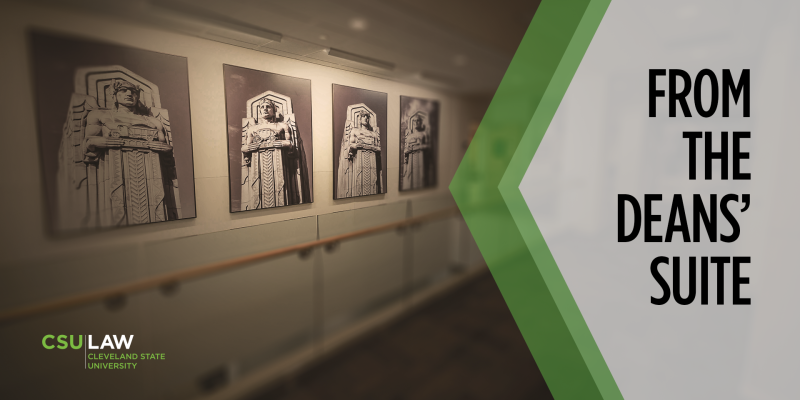
This week, our students reminded me what leadership looks like in action.
At CSU College of Law, we’re proud of our P. Kelly Tompkins Leadership Program—a program that includes coursework, a certificate, our Leaders-in-Residence, and more. But what makes me proudest isn’t what’s written in a program description. It’s what I see our students doing every single day: stepping up, speaking out, and leading.
Yesterday, more than 35 students—25 gathered in person and another 10 joining online—came together with about 15 faculty and staff for the first in a series of lunchtime discussions on Constitutional Law and Current Events. Professors Abby Moncrieff, Kyle Shen, and Reginald Oh opened the floor, and for more than an hour, students drove a remarkable, wide-ranging conversation. They tackled complex issues from threats to marriage equality and U.S. policy toward Venezuela to the Supreme Court’s “Shadow Docket,” federalization of the National Guard, the government shutdown, birthright citizenship, and strategies for strengthening democracy.
Here’s what makes this even more inspiring: the event happened because students asked for it. They wanted a space to grapple with the constitutional dimensions of today’s pressing issues. Our faculty immediately jumped in, ready to facilitate and discuss.
Just days earlier, our Cleveland State Law Review hosted an extraordinary symposium titled Stress Fractures in Democracy and The People’s Response. This was student leadership at its finest. The symposium was conceived, organized, and executed entirely by our Law Review students. They brought together at least 24 speakers: sitting and retired federal and state judges, immigration attorneys and a former immigration judge, community advocates, elected officials, law professors, scholars of public administration, civil rights lawyers, and civic leaders. Students recruited every speaker, designed each panel, and raised the funds to make it happen.
The topics were as ambitious as they were timely: the independence of the judiciary, immigration justice, the constitutional foundations of the administrative state, the widening gap between rights and remedies, community advocacy under strain, impact litigation, facilitating dialogue in an era of division, and how concentrated economic power threatens democratic institutions.
These weren’t just well-attended events. They were the kind of vital conversations that our profession and our democracy urgently need. And they happened because our students made them happen.
At CSU College of Law, we believe leadership begins in law school. Through our leadership program, student organizations, journals, clinics, and self-initiated projects like these, our students don’t just prepare to lead—they lead right now. They embody our mission every day: Learn Law. Live Justice.
We are committed to supporting student-led initiatives like these by providing resources, space, and encouragement so that when students have a vision, they have what they need to bring it to life.
This week reminded me why I love this work and why I have such faith in the next generation of lawyers. Our students aren’t waiting for permission to make a difference. They’re already doing it.
Warmly,
Carolyn and Brian
